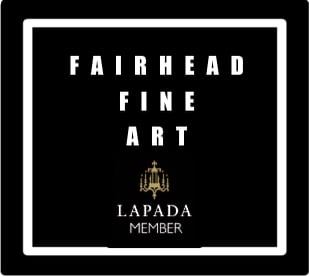Jean Cocteau - Art & Christianity
In 1957 Cocteau finished his first church murals in the Chapelle Saint-Pierre located in the French Riviera town of Villefranche-Sur-Mer. The façade and the exterior depict the life of Saint Peter and an homage to Saint-Mary-of-the-Sea and the ladies of Villefranche. He continued with frescoes and decorations at the registry office in Menton and redecoration with the themes from Greek mythology of an ancient theatre at The Mediterranean Centre for French Studies in Cap d’Ail, France.
Having received his honorary doctorate from Oxford University with the support of René Varin, Cocteau asked if there was anything he could do in return. Varin suggested that he decorate a chapel at Notre Dame de France. Cocteau travelled to London to paint these murals in Our Lady’s chapel in Notre Dame de France, in 1959. Cocteau's fame meant that a screen was erected to hold back the public and press while he painted the murals. He arrived each morning at about 10am and always began by lighting a candle. He was heard talking to the Virgin Mary while working on the drawings. Cocteau included a self-portrait within the Crucifixion scene on the left side of the altar.
It was the French cultural advisor in London, Monsieur René Varin who conceived the idea of asking Jean Cocteau to paint murals for Notre Dame de France in London. The French catholic church had been heavily damaged in the blitz and was being rebuilt and redecorated. Cocteau completed the murals between the 3rd and 11th November 1959. The theme he chose to depict was the Annunciation, the Crucifixion and the Assumption. It is said that he spoke out loud to the characters as he was drawing them. While painting the virgin he is quoted as saying, ““O you, most beautiful of women, loveliest of God’s creatures, you were the best loved. So I want you to be my best piece of work too… I am drawing you with light strokes… You are the yet unfinished work of Grace”.
Other church decorations include: Interior frescos at Chapelle Saint-Blaise des Simples (1960) at Milly-la-Foret, France, motifs on the stained glass windows at the Chapelle des Gournay, (1962) and for the Église Saint-Maximin in Metz, France and frescoes for the Chapelle Notre-Dame de Jérusalem in Frejus, France. Cocteau died before the completion of Chapelle Notre-Dame de Jérusalem (blog cover piece). Edouard Dermit and Roger Pelissier, the ceramic artist, finished it in 1965.
Having received his honorary doctorate from Oxford University with the support of René Varin, Cocteau asked if there was anything he could do in return. Varin suggested that he decorate a chapel at Notre Dame de France. Cocteau travelled to London to paint these murals in Our Lady’s chapel in Notre Dame de France, in 1959. Cocteau's fame meant that a screen was erected to hold back the public and press while he painted the murals. He arrived each morning at about 10am and always began by lighting a candle. He was heard talking to the Virgin Mary while working on the drawings. Cocteau included a self-portrait within the Crucifixion scene on the left side of the altar.
It was the French cultural advisor in London, Monsieur René Varin who conceived the idea of asking Jean Cocteau to paint murals for Notre Dame de France in London. The French catholic church had been heavily damaged in the blitz and was being rebuilt and redecorated. Cocteau completed the murals between the 3rd and 11th November 1959. The theme he chose to depict was the Annunciation, the Crucifixion and the Assumption. It is said that he spoke out loud to the characters as he was drawing them. While painting the virgin he is quoted as saying, ““O you, most beautiful of women, loveliest of God’s creatures, you were the best loved. So I want you to be my best piece of work too… I am drawing you with light strokes… You are the yet unfinished work of Grace”.
Other church decorations include: Interior frescos at Chapelle Saint-Blaise des Simples (1960) at Milly-la-Foret, France, motifs on the stained glass windows at the Chapelle des Gournay, (1962) and for the Église Saint-Maximin in Metz, France and frescoes for the Chapelle Notre-Dame de Jérusalem in Frejus, France. Cocteau died before the completion of Chapelle Notre-Dame de Jérusalem (blog cover piece). Edouard Dermit and Roger Pelissier, the ceramic artist, finished it in 1965.
